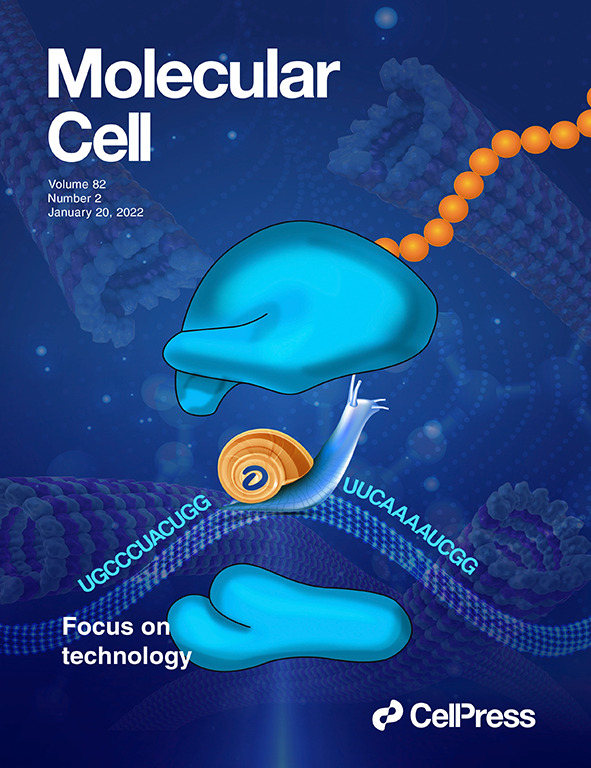一种 RXLR 效应子会破坏 ER-Golgi 界面的囊泡贩运,从而导致疫霉致病。
IF 6.5
3区 生物学
Q2 BIOCHEMISTRY & MOLECULAR BIOLOGY
引用次数: 0
摘要
疫霉菌(Phytophthora)是一种卵菌纲植物病原体,在其整个生命周期中都会向植物细胞分泌效应物,以操纵宿主免疫力,实现成功定殖。然而,效应子触发坏死细胞的分子机制仍未确定。在这项研究中,我们从荚膜真菌(Phytophthora capsici)中鉴定出了一种 RXLR 效应子(Pc12),它通过与 Rab13-2 相互作用,引发一种独特的内质网(ER)应激反应,从而增强毒力并诱导坏死。Pc12 诱导的细胞坏死并不表现出传统的效应触发免疫(ETI)介导的超敏细胞死亡,包括 NLR 下游信号元件的参与和防御相关基因的转录重编程。相反,它改变了ER驻留蛋白的定位,并将分泌蛋白限制在ER内。Pc12 直接与主要定位于 ER 和高尔基体的 Rab13-2 相互作用,导致高尔基体上的 Rab13-2 信号减弱。此外,在有 Pc12 存在的情况下,Rab13-2 与其相互作用者 Rab escort protein 1 (REP1) 的亲和力增强。结构预测显示,Rab13-2的一个特定残基对于与Pc12的C端结合至关重要。替换该残基可减少其与 Pc12 的相互作用并影响荚膜蝙蝠的感染,同时保持其与 REP1 和前酰化 Rab 接受者(PRA1)的相互作用。这些发现让我们深入了解了病原体效应因子如何通过破坏 Rab13-2 的循环来诱导一种独特形式的坏死细胞死亡,从而促进宿主植物的定殖。本文章由计算机程序翻译,如有差异,请以英文原文为准。
An RXLR effector disrupts vesicle trafficking at ER-Golgi interface for Phytophthora capsici pathogenicity
Phytophthora species, an oomycete plant pathogen, secrete effectors into plant cells throughout their life cycle for manipulating host immunity to achieve successful colonization. However, the molecular mechanisms underlying effector-triggered necrotic cell death remain elusive. In this study, we identified an RXLR (amino acid residue; Arginine-Any amino acid-Leucine-Arginine motif) effector (Pc12) from Phytophthora capsici, which contributes to virulence and induces necrosis by triggering a distinct endoplasmic reticulum (ER) stress response through its interaction with Rab13-2. The necrotic cell death induced by Pc12 did not exhibit conventional effector-triggered immunity-mediated hypersensitive cell death, including the involvement of nucleotide-binding site leucine-rich repeat downstream signaling components and transcriptional reprogramming of defense-related genes. Instead, it alters the localization of ER-resident proteins and confines secretory proteins within the ER. Pc12 directly interacts with Rab13-2, which is primarily localized to the ER and Golgi apparatus, resulting in a diminished Rab13-2 signal on the Golgi apparatus. Furthermore, Rab13-2 exhibits increased affinity for its interactor, Rab escort protein 1, in the presence of Pc12. Structural predictions revealed that a specific residue of Rab13-2 is crucial for binding to the C-terminus of Pc12. Substitution of this residue reduced its interaction with Pc12 and impaired P. capsici infection while maintaining its interaction with Rab escort protein 1 and prenylated Rab acceptor 1. These findings provide insight into how a pathogen effector induces a distinct form of necrotic cell death to facilitate colonization of the host plant by disrupting the recycling of Rab13-2, a protein involved in vesicle trafficking at the ER-Golgi interface.
求助全文
通过发布文献求助,成功后即可免费获取论文全文。
去求助
来源期刊

Molecules and Cells
生物-生化与分子生物学
CiteScore
6.60
自引率
10.50%
发文量
83
审稿时长
2.3 months
期刊介绍:
Molecules and Cells is an international on-line open-access journal devoted to the advancement and dissemination of fundamental knowledge in molecular and cellular biology. It was launched in 1990 and ISO abbreviation is "Mol. Cells". Reports on a broad range of topics of general interest to molecular and cell biologists are published. It is published on the last day of each month by the Korean Society for Molecular and Cellular Biology.
 求助内容:
求助内容: 应助结果提醒方式:
应助结果提醒方式:


